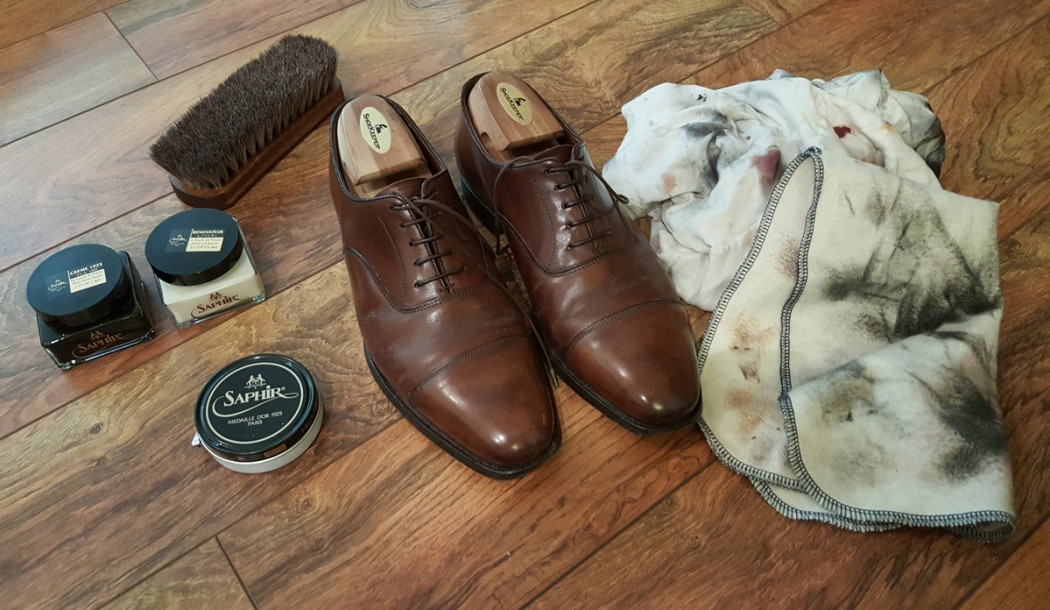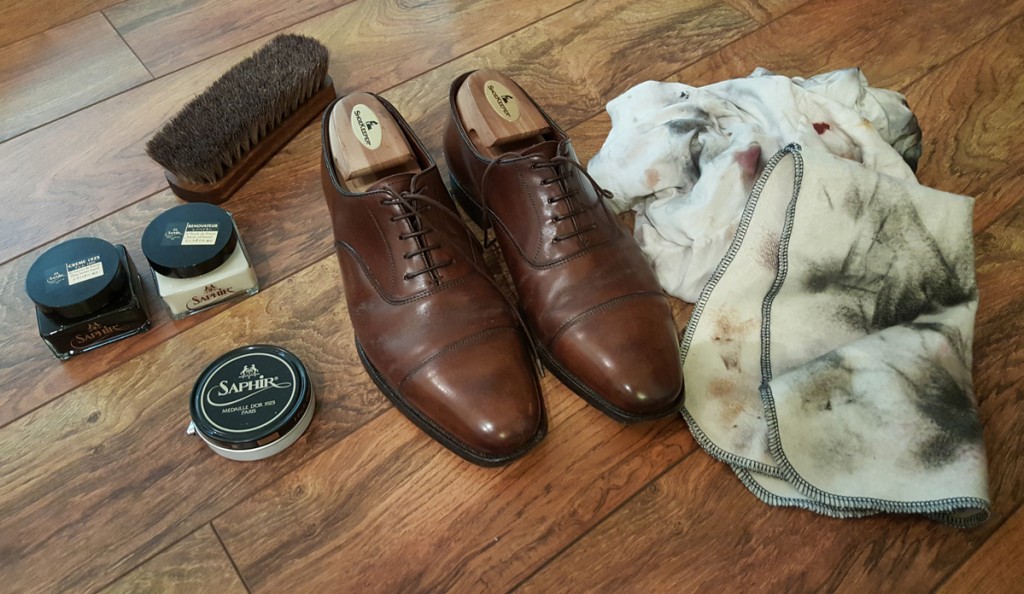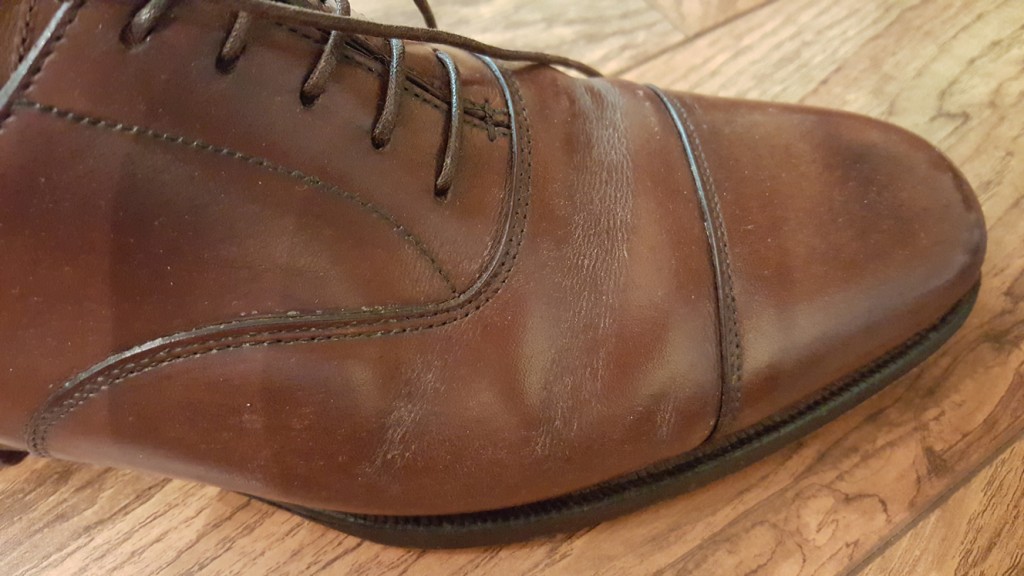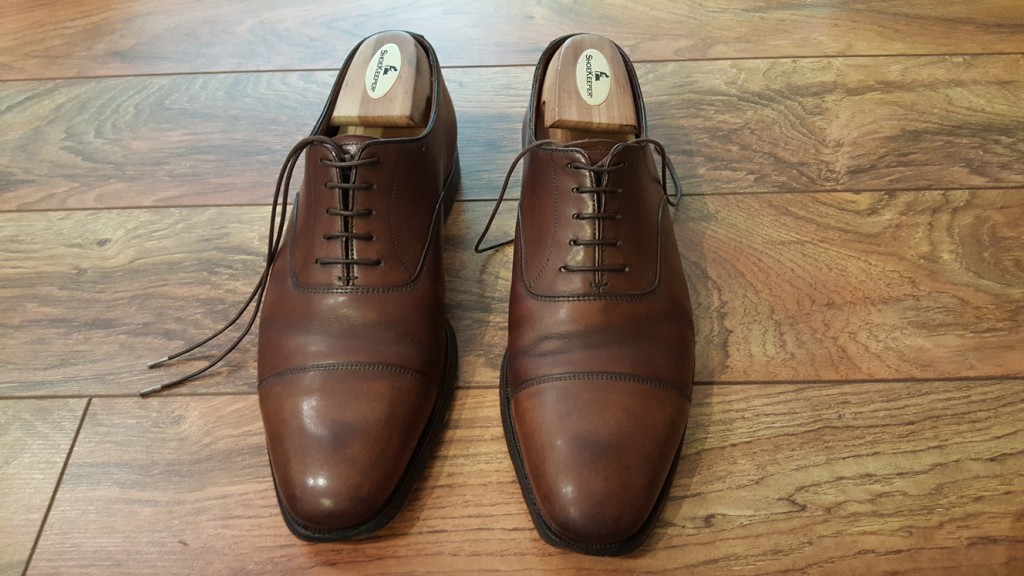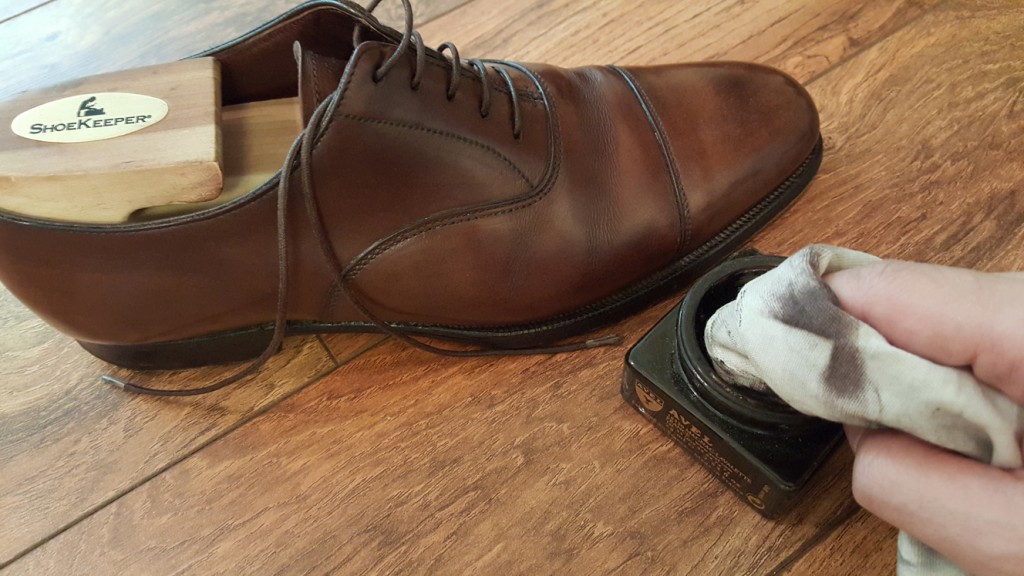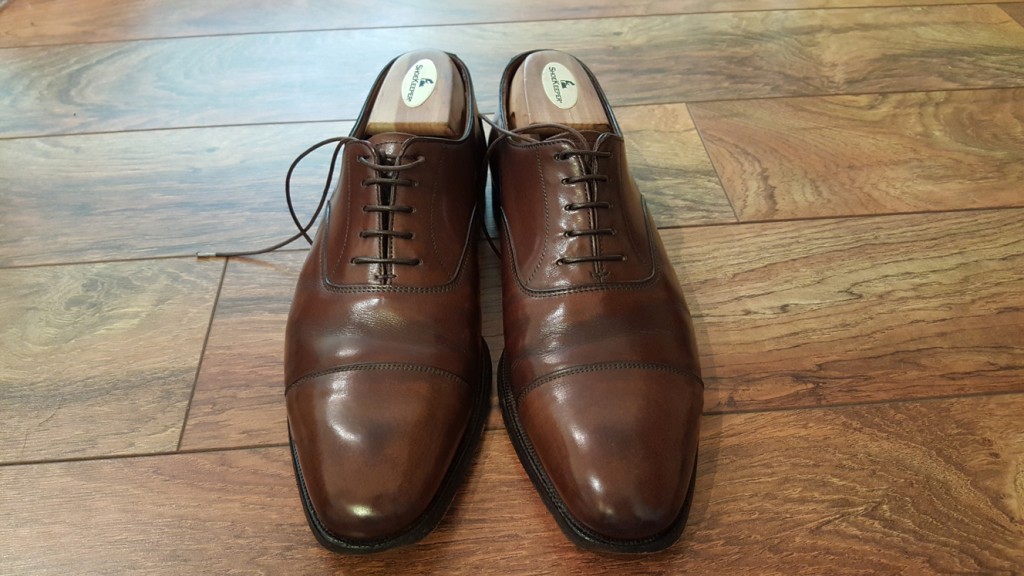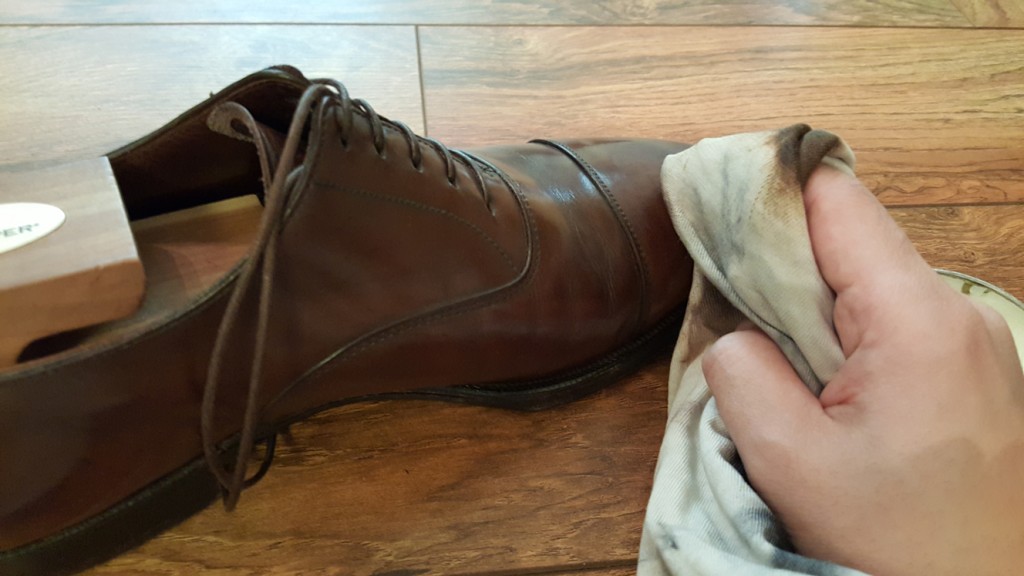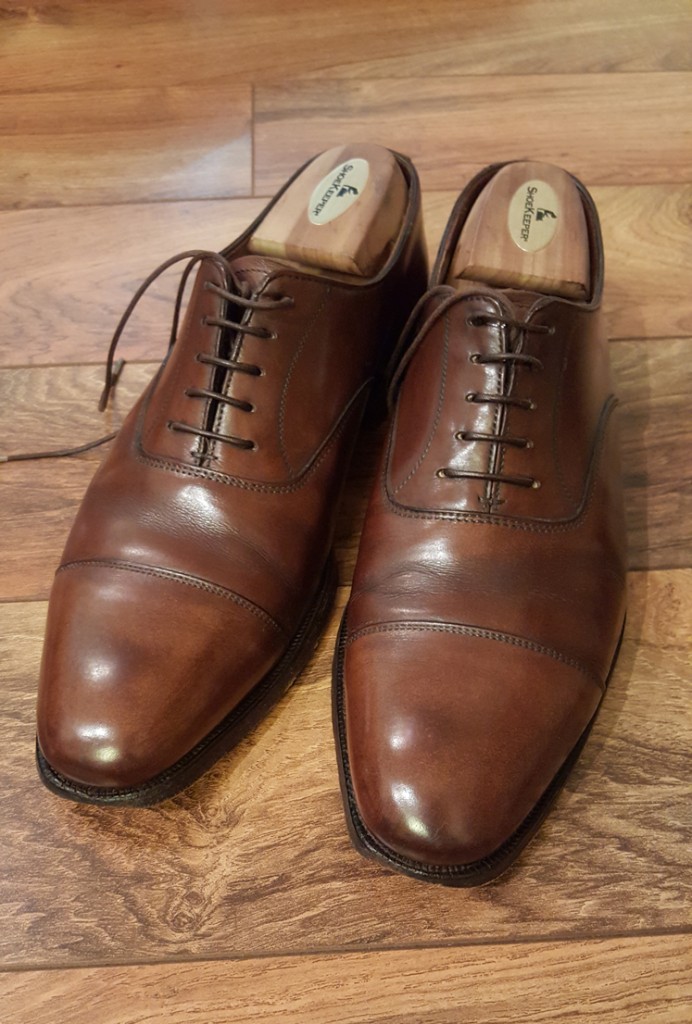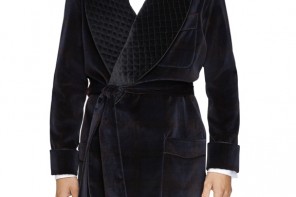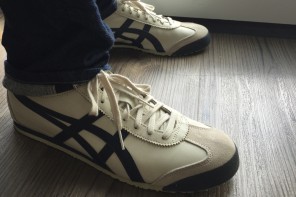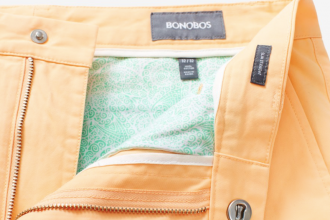Back in the day, we didn’t have a lot of options for taking care of leather shoes. We had Kiwi, and that was probably about it. And we did not mind, because we were all wearing plastic Kenneth Coles on our feet. They stayed shiny on their own for months, which happened to be about as long as the shoes lasted.
But now, everyone knows about good leather shoes, and the difference between goodyear and blake, and all that. Stores are hawking various tinctures and unguents promising to preserve your expensive footwear for generations, while giving them that otherworldly glow normally seen on holy relics by the faithful. And of course, not everyone can spend hours using all these products on their shoes.
I’ve tried a lot of these products, and after years of trial and error I have arrived at simple routine leather shoe care method that 1) won’t break the bank, and 2) will allow you to spend time on other things, such as drinking. And when you eventually come around to owning twenty pairs of Crockett & Jones, you won’t be stuck polishing them for hours with expensive (but really nice!) creams when in fact a more affordable option would do, including, of course, the humble tin of Kiwi.
For this demonstration, I’ll focus on the weekly shoe polish regimen. It’s good to do this to your shoes at least once a week, or at least once every several wears. This particular pair has seen rainy weather, and so I had to get working on them after they dried. My tools: a shoe brush, an old cotton t-shirt, a cotton buffing cloth, and some Saphir products: dark brown cream, Renovateur, and clear polish. As I’ve alluded to before, you can probably do without a couple of them. The Renovateur, however, is essential. So grab that if you can.
Here is how the shoes looked like before. You can see how the leather needs moisturizing.
I used the shoe brush to get the dirt and dust off the shoes. Readers may note that I’m not removing the shoelaces. This is because removing them and re-lacing sucks. I’ll only do this maybe once every several months as part of total shoe rehab. But for weekly maintenance, I think it’s overkill.
I applied a dab of Renovateur using the old t-shirt. A little of it goes a long way, so be careful not to drown your shoes in it. Follow the instructions and wait for several minutes after application before buffing it off.
Buff the Renovateur off, then apply the cream polish. Now, you have a choice to make here: If you want to give your shoes that “antique” finish, use darker cream or polish. If you want your shoes to look factory-fresh, use cream or polish that is lighter than the color of the shoe, or use neutral. Which is better? The answer, of course, depends.
It depends on how much damage you’re doing to the leather as you go about your workweek, and also on how scared you are about memorializing that damage. Once you get a nice scuff into the leather, darker cream and polish will etch it in, forever. So if you’re really putting the hurt on your shoes, you should probably stay away from the darker creams and polishes.
On the other hand, if you aren’t clumsy and don’t mind a little experimentation, using darker creams and polishes can add a lot of character to your shoes. This particular pair of mine is about 8 years old, and they have aged beautifully. So, I used a little dark brown cream on the shoes.
An important note on Saphir cream: A little goes a long, long way. Do not use one of those fancy brush applicators to apply it. You’ll end up with shoes caked in dried cream that’s a complete pain in the ass to rub off. Save your money: use the old t-shirt, and don’t use unnecessary amounts of cream.
Here are the shoes after I’ve buffed off the cream. Looking pretty good!
You can decide to stop here, but I usually like to finish with some paste polish. I usually use neutral, since it works on everything.
And here are the shoes after that. Ready to take on the world.
Later on I’ll get into more aspects of leather care, particularly caring for shell cordovan, using a deer bone, and getting that glassy “spit shine.” But for 90% of shoe care, this is all you need to know and do.

